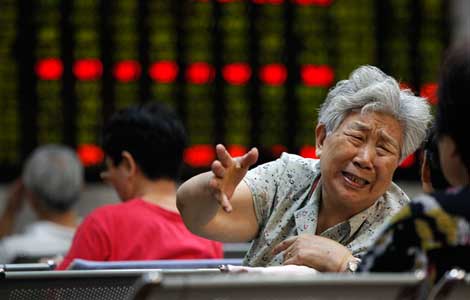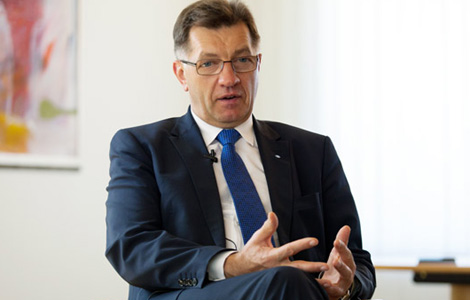Avoid victimizing others
Updated: 2013-07-30 09:13
By Yu Xiang (China Daily)
|
||||||||
US Federal Reserve should take the global economy into consideration when implementing its retreat from QE
Recently the US Federal Reserve stated its intention to draw its quantitative easing policy to an end. Although the Fed's officials, including Ben Bernanke himself, have repeatedly stressed that the final decision on when has not been made, based on the United States' economic situation and the conditions given by Bernanke for quitting quantitative easing, it is highly probable it will take place within the year.
The economic indicators have been favorable for quitting, as inflation fell below 2 percent and the unemployment rate is falling. Since April of last year, the US' annual inflation rate has remained low at between 1.3 and 1.9 percent. Since last December, the unemployment rate has declined to 7.6 percent, and although it has not yet dropped to 7 percent, there are reasons to expect the Fed will not wait for that to happen. As long as the unemployment rate declines steadily for three consecutive months, monetary policy adjustments will occur. Of course, other factors, such as second and third quarter GDP growth, the fiscal situation, market response, and even pressure from US President Barack Obama will influence the Fed's final decision.
More importantly, the Fed has started to release signals to test market response, which means the Fed has figured out a retreat strategy. On Dec 13, Bernanke first mentioned exit conditions. Then on May 22, Bernanke said at a congressional hearing the Fed will consider the scale of its retreat from quantitative easing. And on June 19, the Fed issued a monetary policy statement after the Federal Open Market Committee meeting saying, "The scale of monthly equity purchase may be cut later this year."
The Fed's retreat strategy will be step by step. The first step will be reducing purchase scale, limiting the Fed's balance sheet expansion. Specifically, the first step will be to reduce the current monthly purchase scale from $85 billion to $50-60 billion, and then drop to $30 billion, before finally stopping. Then in the mid-term, the Fed will adjust its balance sheet structure, gradually raising the benchmark interest rate. In the long term, the Fed will sell bonds bought under its quantitative easing policies.
While the Fed has a roadmap for its retreat, any negligence may lead to huge economic risks, which is of big concern to US investors and of even more concern to the investors in emerging economies.
Undeniably, the implementation of quantitative easing has played a big role in propelling the US economy out of the crisis, which has boosted emerging countries' exports to the US. But it is also undeniable that its implementation has undermined the stability of their economic recovery. Many emerging economies, including China, face major challenges from inflation and asset bubbles. In nature, quantitative easing is diluting the US debt by releasing extra liquidity, making other countries share the costs of the US' crisis. Ultimately, emerging markets are the biggest victims of the US' quantitative easing.
Most Viewed
Editor's Picks

|

|

|

|

|

|
Today's Top News
Families of crash victims to sue Asiana in the US
Major SOEs eye profits from abroad
Train collision kills at least 44 in Switzerland
Sino-Japanese summit ruled out
Manila's base plan targets China
Hun Sen's party win to stabilize situation: expert
Beijing plans $81b shantytown renovation project
CMOC buys stake in Rio Tinto
US Weekly

|

|















